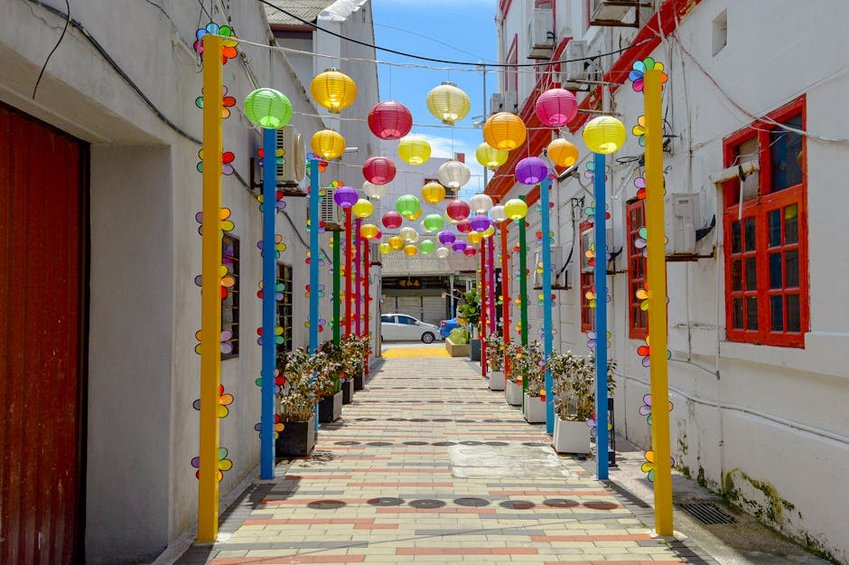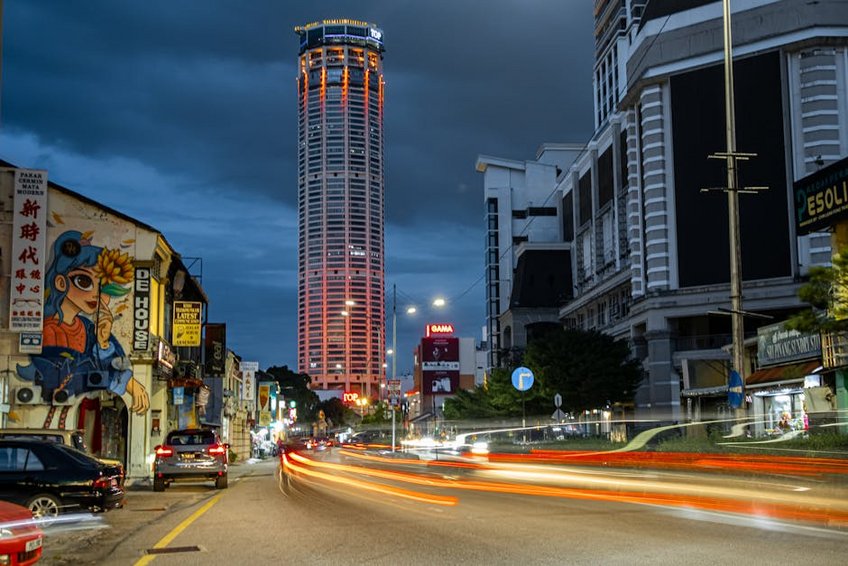Penang Street Art
Penang Street Art represents one of the most vibrant and Instagram-worthy cultural phenomena in Southeast Asia, transforming George Town’s historic lanes into an open-air gallery that tells stories through murals, iron sculptures, and interactive installations. As you wander through the UNESCO World Heritage site, you’ll discover that these artistic creations do more than just decorate walls—they preserve local heritage, reflect community identity, and invite travelers into a dynamic conversation between past and present. Whether you’re an art lover, a history enthusiast, or simply someone looking for that perfect travel photo, Penang’s street art offers a unique, engaging, and utterly memorable experience. From Ernest Zacharevic’s iconic children at play to anonymous local artists’ thought-provoking pieces, this creative landscape ensures that every turn reveals something new, making it a must-visit destination for anyone exploring Malaysia.
Penang Street Art Essential Information
Understanding the background and significance of Penang Street Art will greatly enhance your appreciation as you explore. The movement gained international attention around 2012 when the Penang Municipal Council invited Lithuanian artist Ernest Zacharevic to create a series of murals as part of the George Town Festival. These pieces, which blend painted elements with real objects like bicycles and motorcycles, quickly became cultural landmarks. However, the art you see today is a collaborative effort involving both international artists and local talents, each contributing to a visual narrative that celebrates Penang’s multicultural identity. The artworks are not static; they evolve, with new pieces appearing and older ones sometimes fading, creating a living gallery that reflects the city’s dynamic spirit.
History and Cultural Significance – What You Need to Know
- The street art initiative began as part of a broader effort to revitalize George Town after it received UNESCO World Heritage status in 2008, blending cultural preservation with contemporary creativity.
- Many murals depict scenes from everyday life in old Penang, such as children playing, artisans at work, or traditional trades, serving as visual storytelling that connects younger generations with their heritage.
- Local communities often have personal connections to the artworks, with some murals inspired by real residents or historical photographs, adding layers of meaning beyond their visual appeal.
- Budget travelers can enjoy the art for free—since it’s public—and spend around $5-10 USD on drinks and snacks, with hostel stays costing $15-25 USD per night.
- Mid-range explorers might budget $30-50 USD daily for comfortable guesthouses, meals at cafes, and perhaps a guided tour ($10-20 USD per person).
- Luxury visitors can expect to spend $100+ USD per day on boutique hotels, private guides, and fine dining, enhancing the experience with comfort and convenience.
- Penang Tourism Board Official Site
- Lonely Planet Penang Guide
Key Artists and Their Styles – Key Details
While Ernest Zacharevic is the most famous name associated with Penang Street Art, numerous other artists have left their mark. Zacharevic’s style is characterized by its interactive, 3D quality—incorporating real objects into the paintings to create playful, photo-worthy scenes. Malaysian artists like Tang Yeok Khang and Reggie Lee have contributed works that often focus on social commentary or local folklore, using different techniques from hyperrealism to abstract designs. Additionally, the “Marking George Town” project introduced a series of iron rod sculptures that illustrate historical anecdotes or cultural practices, providing educational context alongside the painted murals. This diversity ensures that the art scene remains fresh and multifaceted.

Penang Street Art Planning Your Trip
To make the most of your Penang Street Art adventure, some thoughtful planning will go a long way. George Town’s art is scattered across a relatively compact but maze-like area, so having a strategy will help you cover more ground without missing highlights. Start by deciding whether you prefer a self-guided tour using a map or app, or if you’d rather join a guided walk to gain deeper insights. Consider factors like time of day—early mornings or late afternoons offer softer light for photography and fewer crowds—and physical comfort, as you’ll be walking extensively in a tropical climate. Packing essentials like water, sunscreen, and a power bank for your phone will ensure you stay energized and ready to capture every moment.
Best Time to Visit Penang Street Art
The ideal time to explore Penang Street Art is during the dry season, from December to February, when rainfall is minimal and temperatures are slightly cooler, typically around 86°F (30°C). However, if you prefer fewer tourists, consider the shoulder months of March-April or September-November, though be prepared for occasional rain. Time of day is equally important: aim for early morning (8-10 AM) to avoid the heat and crowds, or late afternoon (4-6 PM) for beautiful golden hour lighting that makes the murals pop. Avoid midday when the sun is harsh and the streets are packed with tour groups. Note that major festivals like Chinese New Year can bring larger crowds but also add a festive atmosphere to your visit.
Budget Planning and Costs
Essential Preparation Checklist
Before heading out to discover Penang Street Art, a few practical preparations will ensure a smooth experience. First, download an offline map or a dedicated street art app that pinpoints mural locations—cell service can be spotty in narrow lanes. Wear comfortable walking shoes and light, breathable clothing suitable for humid weather; a hat and sunglasses are also recommended. Carry a reusable water bottle to stay hydrated, and have small change ( Malaysian Ringgit) for purchasing local snacks or donations to street performers. If you’re serious about photography, bring a portable tripod for selfies with the interactive art. Lastly, familiarize yourself with basic courtesy—be patient at popular spots and respect private property adjacent to the artworks.
Penang Street Art Top Attractions and Activities
Exploring Penang Street Art is like embarking on a treasure hunt where every corner holds a new surprise. The most famous pieces are concentrated in the core heritage zone of George Town, particularly around Lebuh Armenian, Lebuh Cannon, and Lebuh Muntri, but venturing into quieter lanes often reveals lesser-known gems. Beyond simply viewing the art, you can engage with it—posing with the interactive elements, reflecting on the cultural messages, or even participating in local art workshops. Many visitors combine their art walk with visits to nearby cafes, temples, and museums, creating a rich cultural day out. Whether you spend two hours or two days, the experience is immersive, educational, and endlessly photographable.
Must-See Highlights
No visit to Penang Street Art would be complete without seeing Ernest Zacharevic’s most iconic works. “Kids on a Bicycle” on Lebuh Armenian is arguably the most famous—a joyful scene of two children riding a real bicycle embedded in the wall, perfect for creative photos. Nearby, “Little Children on a Swing” invites participation, with viewers often pretending to swing alongside the painted figures. Another standout is “Boy on a Motorcycle” on Lebuh Ah Quee, which incorporates an actual vintage motorcycle. Don’t miss the large cat mural “I Want Bao” on Lebuh Muntri, or the thoughtful “Reaching Up” on Lebuh Cannon. These pieces not only showcase artistic skill but also embody the playful, communal spirit of George Town.
Hidden Gems and Local Favorites
While the famous murals draw the crowds, seeking out lesser-known artworks offers a more intimate experience. Explore lanes like Lorong Soo Hong for vibrant pieces by local artists, or head to the Hin Bus Depot—a transformed bus station that now serves as an art center with rotating exhibitions and street art. Look for the “Win Win No Chicken” mural on Lebuh Victoria, a commentary on modern life, or the beautiful “Indian Boatman” on Lebuh Pantai, which honors Penang’s maritime history. Local favorites also include the iron rod sculptures, such as “The Letter Writer” on Lebuh Armenian, which tells historical stories through detailed metalwork. These hidden spots provide quieter moments for reflection and photography.
Penang Street Art Practical Travel Information
Navigating Penang Street Art requires some practical know-how, especially regarding transportation, accommodation, and daily logistics. George Town is well-connected, with Penang International Airport (PIN) serving numerous domestic and international flights. Once in the city, the art district is best explored on foot, but trishaws, ride-hailing apps, or rented bicycles offer alternatives for longer distances. Accommodation ranges from budget hostels to luxury hotels, with many options within walking distance of the major murals. Keep in mind that Malaysia uses Type G plugs (British standard), and the voltage is 240V; English is widely spoken, making communication easy for international travelers.
| Category | Options/Features | Price Range (USD) |
|---|---|---|
| Accommodation | Hostels, guesthouses, boutique hotels, luxury resorts | $15 – $200+ per night |
| Food & Drinks | Street food, cafes, restaurants | $2 – $30 per meal |
| Local Transport | Walking, trishaws, taxis, buses | $0 – $15 per day |
| Guided Tours | Group walks, private guides, audio tours | $10 – $50 per person |


